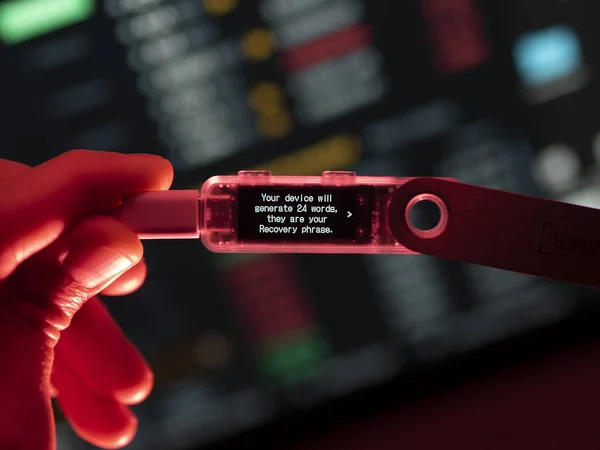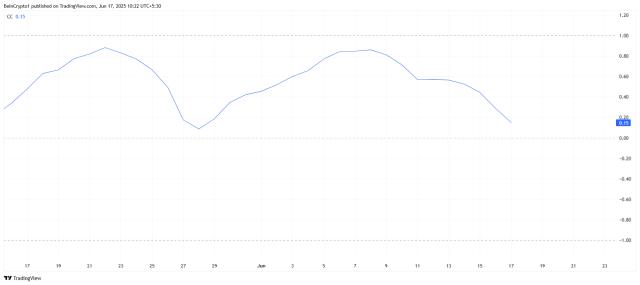Author: SuperEx
Compiled by: Vernacular Blockchain

The cryptocurrency world is once again in turmoil. A piece of news titled "Investors bought cold wallets and lost all their assets overnight" sparked widespread discussion on the Internet.
The beginning and end of the incident:
A cryptocurrency investor purchased a so-called "cold wallet" through a short video platform and subsequently transferred digital assets worth about 50 million yen (about 6.9 million U.S. dollars) into it. Not long after, all these assets were stolen by hackers overnight.
According to blockchain security firm CoinMarketCap, this is not a fictional story, but a real event. The possible culprit? The wallet purchased by the investor was a third-party device that had been tampered with and had a backdoor implanted before delivery.
Today, we will use this real case as a starting point to explore a key question: Is a cold wallet really the safest way to store crypto assets? How can ordinary users protect their assets? What traps must be absolutely avoided?
Tragedy: Why do cold wallets still get hacked?
Many people's first reaction to this news is: "How can someone with 50 million yen in assets not know basic security knowledge?" But the reality is that in the field of cryptocurrency, it is very common for users to have accumulated wealth far beyond their technical knowledge. As the saying goes, "Wealth grows faster than security awareness."
Maybe you bought some Bitcoin in 2013, when it was worth only a few thousand RMB. Today, its value has increased by a hundred times or more. Your asset portfolio has skyrocketed, but your security habits have not kept up.
So, for "better security", you bought a hardware wallet. But you did not verify the source, but placed an order through a live broadcast, short video or a random link on a shopping platform, without confirming whether it came from an official channel.
The result? The assets disappeared.
Because what you bought is not a cold wallet, but a wallet with a pre-installed backdoor. The attacker has already mastered the recovery phrase. Once you deposit your assets, it is equivalent to handing them over to the other party.
Cold wallet ≠ absolutely safe
Cold wallets have their own risks!
When hearing the word "cold wallet", many people immediately think of "absolutely safe". But the truth is: there are real and fake cold wallets, with different "coldness", and correct operating specifications must be followed when using them.
1. What is a cold wallet?
In a broad sense, a cold wallet refers to storing private keys or recovery phrases in an environment that is completely offline and isolated from the Internet.
Common forms:
- Paper wallet : The coldest way - write the private key on a piece of paper, lock it in a safe, and keep it completely offline.
- Hardware wallet: A USB-like device that stores private keys and connects via USB or Bluetooth, emphasizing physical isolation.
- Air-gapped devices : Advanced users may use an offline Linux system to generate and sign transactions.
What is a fake cold wallet?
- Hardware wallets purchased from unofficial channels
- Wallets that require an internet connection to use (such as some Web3 multi-signature wallets)
- Automatically sync the on-chain data through the mobile app when using the wallet
- Generate a recovery phrase for your wallet in an online environment
2. Why are hardware wallets still risky?
“Aren’t hardware wallets off-grid? They have encryption chips and the private keys are stored locally, so aren’t they very safe?”
The problem is:
- Networked = Exposed: Once connected via USB or Bluetooth, it is no longer “cold”
- Firmware tampering risk : attackers may modify the firmware in advance, making your "secure" device completely exposed
- Appearance cannot be detected : Even if the packaging looks brand new, you cannot confirm whether the firmware has been tampered with
- User error : Taking a screenshot of your recovery phrase, typing it into your computer, or emailing it to yourself – these are fatal mistakes
Therefore, the key is not whether to use a hardware wallet, but how to use it : only if you purchase it through official channels, initialize it yourself, and generate the recovery phrase completely offline can it be called "relatively safe."
What kind of wallet is truly safe? Just follow the following points
Regardless of which wallet you use, keep the following rules in mind:
1. Buy only from official channels
Whether it’s Ledger, Trezor, Keystone or any other brand, only buy through the official website or authorized dealers. No matter how convincing the live broadcast is, don’t take any risks.
2. The recovery phrase/private key only exists on paper and never on the Internet
Don't take screenshots, don't copy and paste, don't take photos. Storing your recovery phrase in a note, cloud drive, or email is like handing it over to hackers. The safest way? Write it down and store it in a safe at home.
3. Keep your phone and computer clean and avoid suspicious wallet apps
Many fake wallet apps look exactly like the real thing, but steal your private keys in the background after installation. Before installing any wallet app, always verify the official website, developer identity, and app store ratings.
4. Use multi-signature or multi-device verification
Don’t store all your assets in one wallet. Tiered storage: large assets are stored offline, and small assets are stored in a mobile hot wallet.
5. When using a platform wallet, understand its risk control system
Even for centralized wallets, security varies greatly. Some platforms have comprehensive risk control and withdrawal limits, while other platforms may allow backend staff to move your funds at will.
Choose a wallet with a transparent security system and good user reputation.
Choose a safe and transparent platform wallet
Look not only at the function, but also at the security architecture
For many users, centralized exchange wallets are convenient and easy to use, but they also have risks - you are entrusting your assets to a third party. Therefore, it is not just about functionality, but also about the risk control framework.
Here are some recommended wallet platforms with good security records and high user trust:
- BN : The world's largest trading platform, with leading asset reserve management and SAFU insurance fund, and separation of hot and cold storage.
- OK : Strong technical capabilities, supports MPC wallets, and provides public proof of asset reserves.
- Bitget : Famous for copy trading and derivatives, with powerful wallet isolation and layered encryption technology.
- SuperEx: Super Wallet is perfectly combined with the SuperEx operating system to provide asset isolation for everyone and ensure 100% asset security. At the same time, SuperEx combines the transaction efficiency of a centralized trading platform with the storage security of a decentralized trading platform.
Summary: Security awareness is your first line of defense in the crypto world
Hardware wallets are not a panacea, and cold wallets are not invulnerable.
The real defense is your own awareness, habits, and fear of risk.
A few final tips:
- To purchase a wallet, use only the official website
- The recovery phrase should never be exposed to the Internet, and it is best to keep it on paper
- Enable multiple layers of authentication and don’t rely on a single device
- Don’t blindly distrust the platform, but don’t blindly trust it either.
- Integrate security into your financial strategy, not as an afterthought
The crypto world is full of stories of getting rich overnight.
But those who can keep their wealth and survive long term are always those who remain vigilant.
Link to this article: https://www.hellobtc.com/kp/du/06/5900.html
Source: https://a.c1ns.cn/Uyoc7







